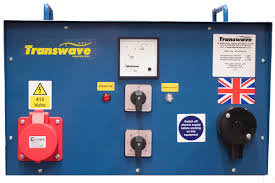Introduction
In today’s rapidly evolving technological landscape, the term “Transwave” has emerged as a significant player across various industries. From audio synthesis to power conversion and photonics, Transwave technologies are reshaping the way we interact with sound and energy. This comprehensive guide delves into the multifaceted world of Transwave, exploring its applications, benefits, and the innovations driving its growth.
🎶 Transwave in Audio Synthesis
What is Transwave Synthesis?
Transwave synthesis is a form of wavetable synthesis that utilizes multiple loops, or “frames,” within a wavetable. Each frame possesses a distinct harmonic structure, allowing for dynamic and evolving sounds as the playback progresses through the wavetable. This technique was notably employed in Ensoniq instruments, enabling musicians to create rich, modulating tones that respond to various performance controls.
Applications in Modern Music Production
The versatility of Transwave synthesis has made it a staple in modern music production. Its ability to produce complex, evolving textures is particularly valued in genres like ambient, electronic, and experimental music. Producers leverage Transwave’s capabilities to craft unique soundscapes that stand out in today’s diverse musical landscape.
⚡ Transwave in Power Conversion
Addressing Single-Phase Power Limitations
In many rural or residential areas, access to three-phase power is limited, posing challenges for operating industrial machinery. Transwave converters offer a solution by enabling the use of three-phase equipment on single-phase power supplies. Manufactured by Power Capacitors Limited, these converters have been widely adopted in workshops and small businesses, providing a cost-effective alternative to infrastructure upgrades.
Benefits for Small and Medium Enterprises
Transwave converters are particularly beneficial for small and medium-sized enterprises (SMEs) that require three-phase power for their operations. By facilitating the use of existing single-phase supplies, these converters help SMEs avoid the high costs associated with electrical infrastructure modifications, thereby promoting operational efficiency and growth.
🔬 Transwave in Photonics
Innovations by TransWave Photonics, LLC
TransWave Photonics, LLC, based in Austin, Texas, is at the forefront of photonic innovation. The company has secured multiple awards from the Department of Defense for its work on high-power quantum cascade lasers (QCLs) and photonic integrated circuits (PICs). These technologies have significant implications for defense, telecommunications, and scientific research.
Advancements in Infrared Technology
TransWave Photonics’ developments in mid-wave and long-wave infrared technologies are paving the way for advancements in free-space optical communications and high-resolution sensing. Their work on monolithic integration of QCLs and passive photonic elements is expected to enhance the performance and scalability of infrared systems.
🛠️ Practical Applications of Transwave Technologies
Enhancing Workshop Capabilities
For workshops operating in areas with single-phase power, Transwave converters enable the use of three-phase machinery without extensive electrical modifications. This capability is crucial for businesses that rely on heavy-duty equipment, as it allows for greater flexibility and cost savings.
Revolutionizing Music Production
In the realm of music production, Transwave synthesis offers producers a powerful tool for crafting intricate and evolving sounds. Its application in virtual instruments demonstrates its potential to shape the sonic characteristics of contemporary music.
Advancing Defense and Communication Systems
TransWave Photonics’ innovations are contributing to the advancement of defense and communication systems. Their high-power QCLs and integrated photonic solutions are expected to enhance the capabilities of military and aerospace applications, providing more efficient and reliable systems.
📈 Future Prospects of Transwave Technologies
Integration with Emerging Technologies
As industries continue to evolve, the integration of Transwave technologies with emerging fields such as artificial intelligence and the Internet of Things (IoT) is anticipated. This convergence could lead to the development of smarter, more responsive systems across various sectors.
Expansion into New Markets
The versatility of Transwave technologies positions them for expansion into new markets, including renewable energy, autonomous vehicles, and advanced manufacturing. Their ability to enhance system efficiency and performance makes them attractive solutions for a wide range of applications.
❓ Frequently Asked Questions (FAQs)
Q1: What is Transwave synthesis, and how does it differ from traditional synthesis methods?
Transwave synthesis involves multiple looping frames within a wavetable, allowing for dynamic and evolving sounds. Unlike traditional synthesis, which often relies on static waveforms, Transwave synthesis provides a more complex and responsive sonic experience.
Q2: Can Transwave converters be used in residential settings?
Yes, Transwave converters are suitable for residential settings, particularly in home workshops where three-phase equipment needs to be operated on a single-phase power supply.
Q3: What industries benefit most from TransWave Photonics’ technologies?
Industries such as defense, telecommunications, and scientific research benefit significantly from TransWave Photonics’ high-power QCLs and photonic integrated circuits.
Q4: Are there virtual instruments that utilize Transwave synthesis?
Yes, virtual instruments like the Stratum Transwave Synth employ Transwave synthesis to create rich and evolving soundscapes suitable for various music genres.
Q5: How do Transwave technologies contribute to energy efficiency?
Transwave technologies, particularly in power conversion and photonics, enhance energy efficiency by enabling the use of existing power infrastructures and improving the performance of optical systems.








![[https://ssstik.kim]-tiktok-downloader](https://hufpostt.com/wp-content/uploads/2025/04/Screenshot_13-360x180.png)
























